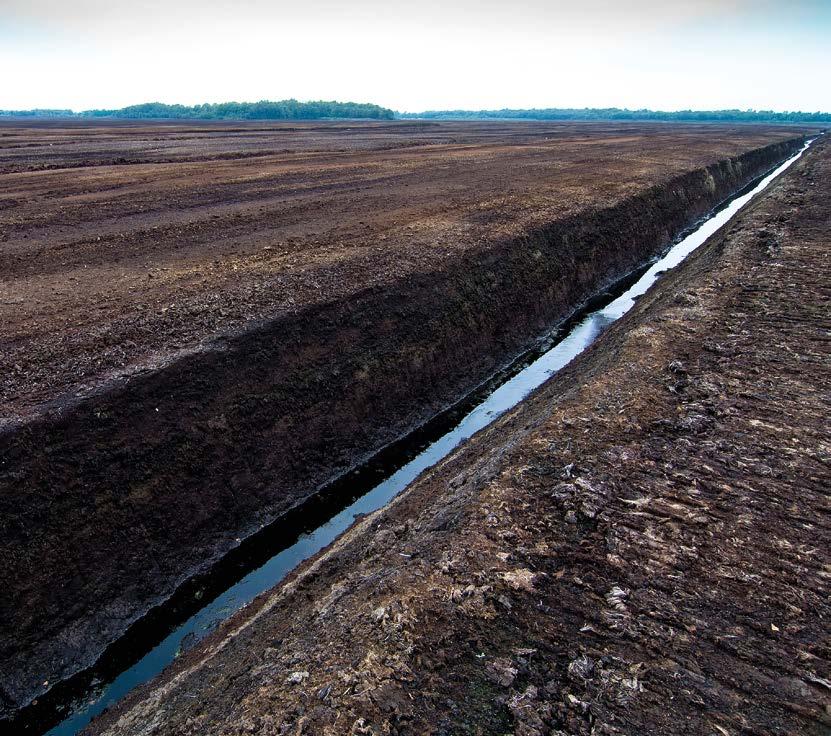
3 minute read
Inspired by the beautiful Bay
The other day I had the honour of being invited to Rossall Point in Fleetwood. I was presenting John Muir Awards to a number of proud participants who had completed their time with The Bay nature and wellbeing programme there.
It was to recognise the actions they had done for nature over a three-month period: 11 bags of beach-clean litter collected, 688 trees planted, 44 hours of scrub and invasive species removal, 42 wildlife habitats created, 87 bird feeders made, and 221 shark egg case records submitted to the Shark Trust’s citizen science monitoring.
You can read more about The Bay and the fantastic news surrounding Eden Morecambe on pages 20 & 21
But I also heard about the friendships made, the confidence and wellbeing that had grown, the lives getting back on track, and the love of nature that had been allowed to flourish.
At the end we stood on the beach with the wind blowing in our hair, skylarks singing overhead, the sounds of the tide roaring in, and with linnets, ringed plovers and turnstones scampering and flitting around us .Mike, the Trust’s Nature and Wellbeing Officer read out some very appropriate words written by the great John Muir 150 years ago:
“Nature is always lovely, invincible and glad, whatever is done and suffered by her creatures. All scars she heals, whether in rocks or water or sky or hearts.”
Since childhood I have always found trips to our British seaside unbelievably magical; and now as an adult living close to Morecambe Bay it is still the sea that I turn to when I am in need of solace, comfort and reflection; as a source of strength and inspiration.
I love watching sparkles of light on the waves, the comings and goings of the sculpted silty channels, the peeping of oystercatchers and the more mournful cry of the curlew; the days when sea and sky meet in a flatness of grey; the storm surges of a high spring tide; the sheer expanse of it all. It is an almost spiritual feeling of connection to something bigger, wilder, freer, more untameable than our everyday life, and when I’m blue it never ceases to make me feel better. Most of all I love pottering about beachcombing and the little glimpses it gives in to the secret world out there under the waves. The crispy, leathery mermaids’ purses on the strandline are a great place to start.
Every time I find one I want to scream “Everything is going to be OK!" Because there are sharks out there! beautiful spotted cat sharks, living, thriving and still having pups!”. Thornback ray eggcases are another common find, veritable dragons that can grow up to 1.4m long and the same across their wingspan. I once found the eggcase of a nursehound shark. They are out there in our seas and they’re 1.6m long. They’re incredible, and harmless to humans.
My other favourites to come across are the mysterious colonial lifeforms. On our beach I regularly find a fossil coral from the Carboniferous period called Siphonophyllia. But if you’re lucky then on the rockier bits of our Lancashire coastline you might come across a modern day living reef made by thousands of Honeycomb worms (Sabellaria alveolata), who create massive structures of interlinked sandy tubes as their home. Or if you’ve ever picked up a hornwrack on a beach, it may look like a scaly seaweed frond but it is actually a bryozoan – a colony of individual animals known as zooids (or “moss animals”).
If you look at one under a microscope or hand lens you might be lucky enough to see each tiny box with its fan-shaped feeding tentacles sticking out. Both of these are tastes of what lies just off the Fleetwood shore in the “Lune deep”: a 70m deep rocky trench designated as a Special Area of Conservation and home to whole living carpets of bryozoans, spectacular feathery peacock worms (a relative of the honeycomb worms), and hydrozoans which are a kind of colonial animal that can look coral-like when attached to the reef on stalks, or they can resemble jellyfish when they are free floating.
This incredible habitat is, in turn, a home to squat lobsters, salmon, spurdog sharks and giant dogfish. And a tiny bit further offshore are the quahog clams which can live for hundreds of years and are the oldest animal on the planet.
It’s a whole hidden world, infinitely precious. And it may feel wild and exotic, but like every corner of our planet it sadly faces a multitude of threats: from pollution, climate change, bottom trawling and inappropriate marine development. Our Wildlife Trust's Living Seas team are promoting visibility and understanding of these incredible places, campaigning for Highly Protected Marine Areas, promoting sustainable fishing, monitoring North West marine and coastal wildlife, and developing the Irish Sea Vision. The Our Future Coast project is looking at promoting nature-based saltmarsh and sand dune coastal defences over concrete ones.
You can help us by supporting one of our marine campaigns, joining a beach clean, or by avoiding fish or shellfish that have been caught with bottom-towed fishing gear.


We know in our hearts what John Muir knew: that being by the sea can heal us; now it’s time for us to help to heal her.










